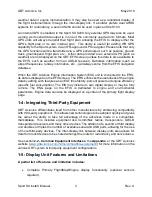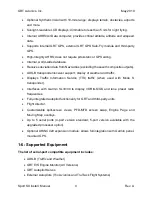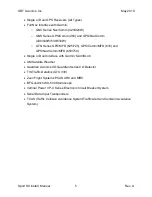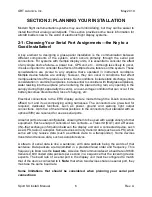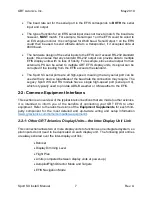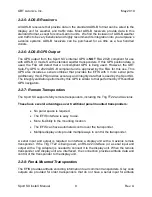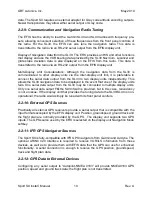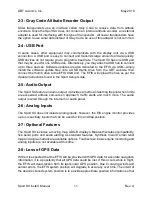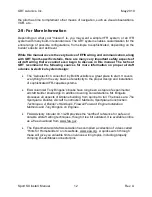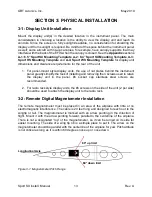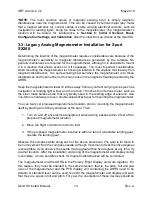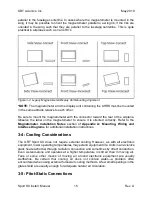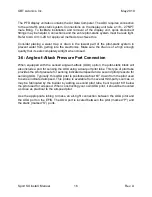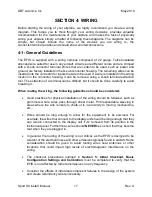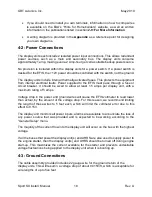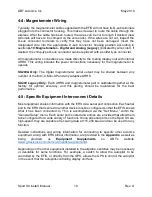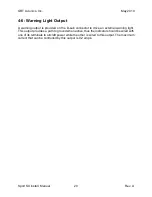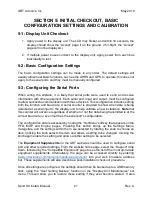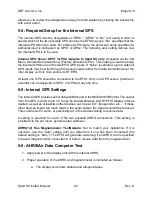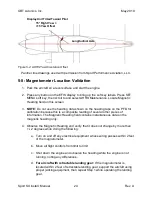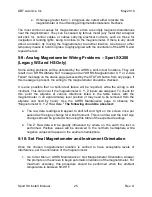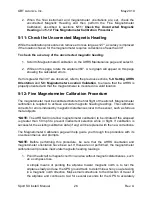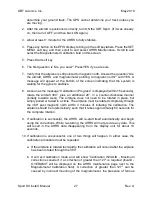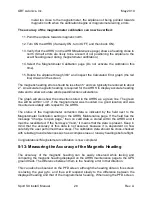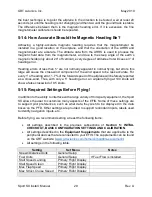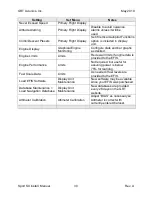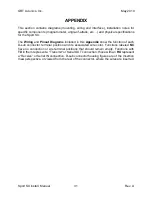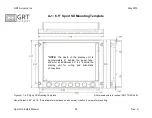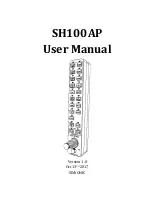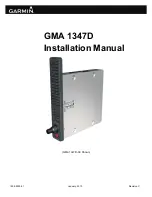
GRT Avionics, Inc.
May 2019
Sport SX Install. Manual
17
Rev. A
SECTION 4: WIRING
Before starting the wiring of your airplane, we highly recommend you create a wiring
diagram. This forces you to think through your wiring decisions, provides valuable
documentation for the maintenance of your airplane and makes the task of physically
wiring your airplane simply a matter of following these diagrams. The diagrams can be
simple, but should include the name of the devices you are wiring to, the
connector/terminal position and should show all interconnections.
4-1: General Guidelines
The EFIS is supplied with a wiring harness composed of 22 gauge, Tefzel-insulated
stranded wire suited for use in any aircraft. All wires are different colors and are crimped
with a D-sub connector terminal. Wires that are certain to be used, such as power and
ground, are factory installed in the D-sub connector housing. The remaining wires can be
inserted into the connector for inputs that are to be used. If a wire is installed in the wrong
location in the connector housing, it can be removed using a D-sub terminal extraction
tool. The extraction of a terminal can be difficult, but it should be done carefully to avoid
breaking it.
When routing the wiring, the following guidelines should be considered:
•
Good practices for physical installation of the wiring should be followed, such as
grommets where wires pass through sheet metal, PVC/expandable sleeving in
areas where the wire is likely to chafe or is in proximity to moving mechanisms,
etc…
•
Wires should be long enough to allow for the equipment to be serviced. For
example, the wires that connect to the display unit should be long enough that they
can remain connected to the display
unit if it’s removed from its position in the
instrument panel. Furthermore, wires should
NEVER
be so short that they become
taut when they are plugged in.
•
In general, the routing of the wiring is not critical, as the EFIS is designed to be
tolerant of the electrical noise and other emissions typically found in aircraft. Some
consideration should be given to avoid routing wires near antennas or other
locations that could impart high levels of electromagnetic interference on the
wiring.
•
The checkout procedures outlined in
Section 5: Initial Checkout, Basic
Configuration Settings and Calibration
must be completed to verify that the
EFIS is not affected by radio transmissions on any frequency.
•
Consider the effects of individual component failures in the design of the system
and create redundancy where necessary.

